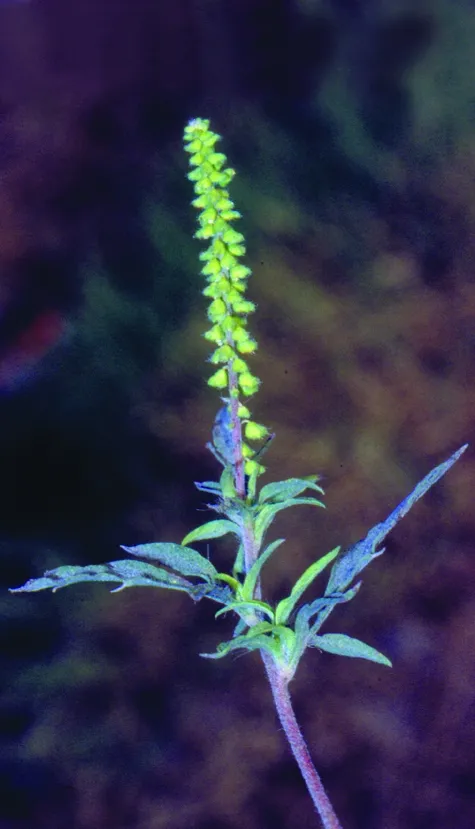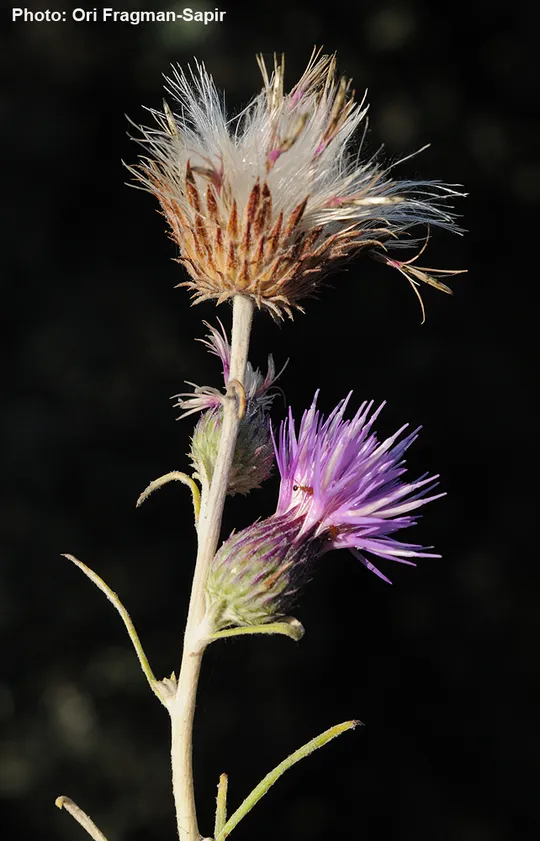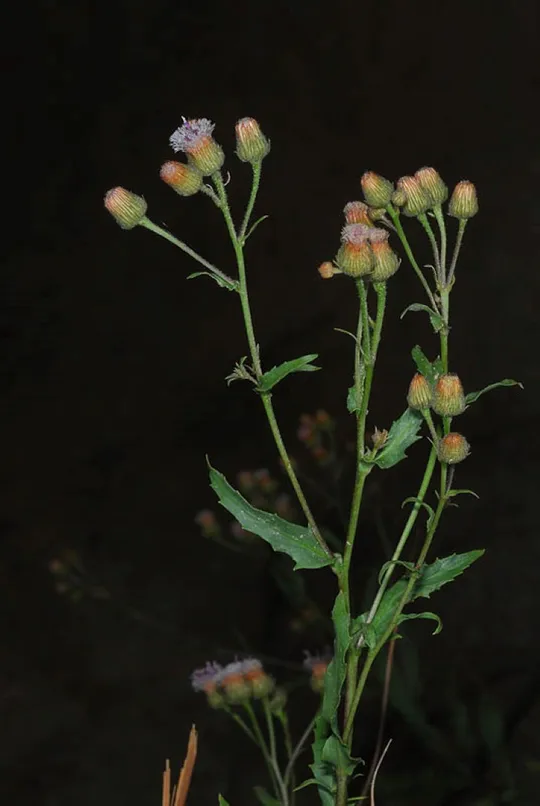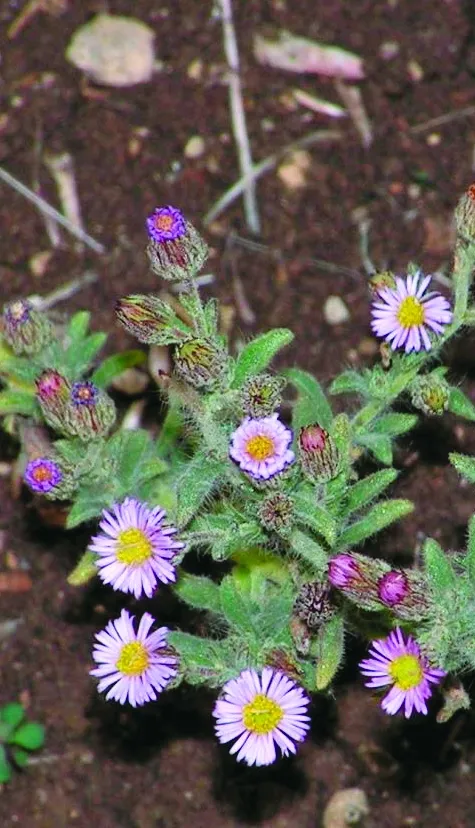Black Chamaileon
Cardopatium corymbosum

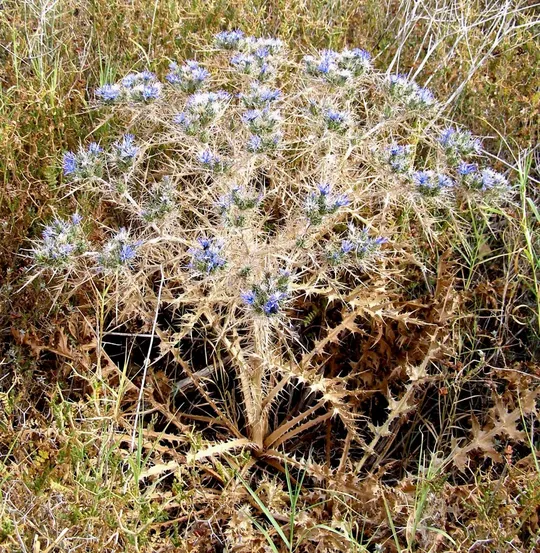
Cardopatium corymbosum grows in Israel
primarily in three regions: the Acre Valley, Carmel Coast, and the Sharon. A
fourth region was reported – the Judean Mountains, where Avinoam Danin found an
isolated population in the Yatir Hills in the south of the region in 1977.
There are 16 documented and confirmed sites in Israel, and according to estimates,
there are a total of 20 sites. In the Acre Valley, it is primarily found in the
area of the oil refineries – the Kishon salt marsh and near the Nesher and Kfar
Hasidim reservoirs. It has disappeared from several other sites where it was
known in the past on heavy soils in the Zvulun Valley. On the Carmel Coast, it
is located in the area of the Taninim Stream and the Dor-Habonim Beach, but it
is extinct from the area of Atlit. In the southern Sharon, three isolated
locations remain – the Bney Tsion Nature Reserve, the Herzliya Pond (Basa) and
Kiryat Shaul. It is extinct from sites in the northern Sharon in the area of
Gan Shmuel and En HaHoresh.
Heavy soils,
sometimes flooded in winter, at the edge of streams or marshes where there is
salinization in the summer, because of the capillary action of water.
The genus Cardopatium comprises 2-3
species, found mainly in the Mediterranean region. In the Asteraceae (Compositae) family the genus belongs to the Cardueae tribe that includes
spiny genera such as Atractylis, Carlina, Carduus, Echinops,
Centaurea, Cynara, Cirsium, Notobasis, Silybum
and others.
Cardopatium corymbosum was given special
weight and consideration by the professional committee and its red number was
set at 3.2, even though strictly speaking the sum of its criteria values was
only 2.6.
·
There is an obvious decreasing trend in
the number of sites in the regions where C. corymbosum grows. The plant is extinct at half the sites from which
it was formerly known in the Acre Valley, as well as from the sites in the Northern
Sharon.
·
Dozens to hundreds of plants were
counted at some sites, but in others, only a few specimens were found.
·
The unique habitat of flooded and
saline depressions in the coastal plain is located in populated or cultivated
areas and is slowly disappearing. This is the main threat to the survival of
the remaining populations. The small number of plants at some of the sites
constitutes an additional threat due to demographic and random factors.
·
In Israel, C. corymbosum is only in
protected in the Bney Tsion Nature Reserve and in the Dor-HaBonim Beach Reserve.
·
The species does not appear in red
lists of other countries, nor is there sufficient information on the threats
and conservation status in these countries.
The sites in
which plants and populations of Cardopatium corymbosum have survived should be followed and
monitored. Efforts should be made to find additional,
undocumented sites. Specific sites outside reserves, where C.
corymbosum grows, should be fenced and protected.
Cardopatium corymbosum is common in the eastern Mediterranean
Basin on sunny rocky slopes and in scrubland. Its range includes Italy,
Macedonia, Greece, Turkey, Syria, Lebanon, Israel and Tunisia. It is found in
the Mediterranean islands of Sicily, Crete and Cyprus. In Syria, Lebanon and
Israel its distribution is reduced to a narrow band along the coast on heavy
soils, marshes and saline soil.
Cardopatium
corymbosum
is a perennial thorny grass that is rare in the Mediterranean Basin. It
grows in Israel in a unique, dwindling habitat of heavy soils that are
occasionally flooded and salinized or near marshes and streams. It is a peripheral
species and Israel is the southwestern limit of its range. There is no
information available on the threats and conservation status of the species in
other countries.
כהן, ע. ושמידע, א. 1989. צמחים נדירים בארץ/נעצוצית סבוכה. טבע וארץ ל"א/10: 40-41.
Current Occupancy Map
| 1000 squre meter pixel | 5000 squre meter pixel | 10000 squre meter pixel | |
|---|---|---|---|
| number of observations | 0 | 0 | 0 |
| in total pixels | 0 | 0 | 0 |
| Family | Asteraceae |
| Classification | On the near threatened species list |
| Ecosystem | Mediterranean |
| Chorotype | Eastern Mediterranean |
| Conservation Site | Dor-HaBonim Beach nature Reserve |
| Rarity |
1
2
6
|
|---|---|
| Vulnerability |
0
2
4
|
| Attractiveness |
0
0
4
|
| Endemism |
0
0
4
|
| Red number |
1
2.6
10
|
| Peripherality | W |
| IUCN category | DD EW EX LC CR EN VU NT |
| Threat Definition according to the red book | Near threatened |
 Based on:
Based on:
